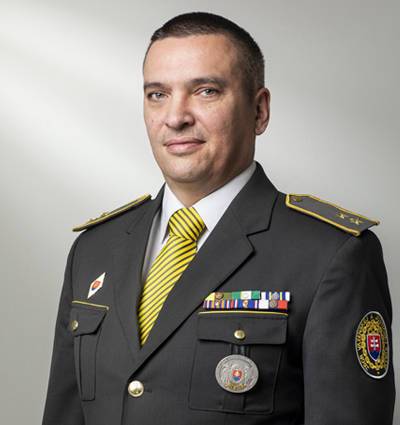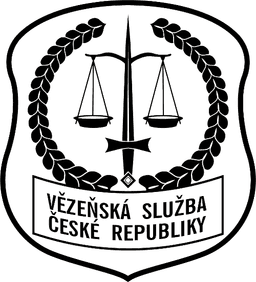Remand Prison and Prison
Bratislava
Charakteristika
History of the Prison
The original prison building from 1854, known as the Royal County Prison during the Austro-Hungarian era (located at today’s Župné Square) – no longer met required standards, was falling into disrepair, and was persistently overcrowded. Therefore, in the 1920s, a decision was made to construct a new prison.
The current prison building was constructed between 1934 and 1936 for the purpose of remand detention, located in the rear section of the Palace of Justice. It was built based on the Pennsylvania panopticon model in the shape of a cross. From the circular central hub of the building, staircases lead to four floors, from which corridors extend to the individual cells. In 1937, the prison was handed over for use, with a capacity of 358 prisoners.
The prison has undergone several reconstructions, modernizations, and new construction projects. The most significant changes took place in the 1970s and 1980s, during which the entire prison complex was enclosed by various auxiliary structures. New premises were also built for the Directorate General of the Corps of Prison and Court Guard.
Between 1963 and 1969, the prison also served as a correctional institution for juvenile males. For a short time, it housed a forensic psychiatric assessment unit and was also used for the enforcement of short-term prison sentences.
From 2015 to 2018, the prison underwent a comprehensive reconstruction, which addressed the long-standing poor technical condition of the buildings. The reconstruction improved not only the accommodation and hygiene conditions for inmates, but also created new premises for the prison officers and employees of the prison. Sports fields and rooms for cultural, educational, and spiritual activities were established, along with high-security cells, cells for persons with reduced mobility, and disciplinary punishment cells. An additional floor was added to the top of the building, providing sufficient space for 17 new prison yards.
And in response to a frequently asked question from other prisons – yes, Bratislava Prison is indeed equipped with heated flooring in its prison yards, which ensures the melting of ice and snow during the winter season. This not only minimizes the risk of injuries among prisoners but also resolved the issue of snow disposal.
Following the reconstruction, Bratislava Prison is considered one of the most modern correctional prisons in Slovakia, meeting the strictest criteria not only in terms of security but also the recommendations and standards of the Council of Europe concerning the treatment of incarcerated persons.
The Present
At present, the Bratislava Prison provides both remand detention and the enforcement of prison sentences. Remand detention is carried out separately for male and female remand prisoners, within standard and mitigated custody regime units. Prison sentences are enforced under minimum, medium, and maximum security levels. Sentenced prisoners classified under the minimum security level are placed in an open unit.
In order to enhance the effectiveness of treatment for specific categories of prisoners, the prison operates, in addition to standard units, specialized units – an admission unit, a pre-release unit, disciplinary punishment cells, and a high-security unit for prisoners in the maximum security level, which also includes a de-escalation room.
The total capacity of the Bratislava Prison is 792 prisoners, of which 255 places are allocated for remand prisoners and 537 for sentenced prisoners. Of the latter, 172 places are assigned to sentenced prisoners placed in the open unit.
As part of the pre-release unit, the prison is actively involved in the long-term national project Chance for Return II, funded by the European Social Fund under the Operational Programme Human Resources, Priority Axis: Social Inclusion. The project is primarily aimed at bridging the gap between penitentiary and post-penitentiary care policies, reducing the risk of reoffending, and preventing potential crisis situations in the immediate surroundings of individuals returning from imprisonment. Its main activity focuses on the resocialization and active reintegration of prisoners into society and the labor market, as well as improving their access to social services.
Cultural and educational activities focus primarily on awareness-raising, leisure, and sports activities; the use of the prison library; watching television and listening to radio broadcasts; subscribing to newspapers and magazines; organizing cultural, educational, and entertainment events; and hosting cultural performances and other initiatives that contribute to increasing inmates’ cultural awareness and general education. A classroom for accused persons, a reading room, a gym, a computer room, and a newly established classroom for illiterate individuals and foreigners learning the Slovak language have been set up. The rooftop is equipped with prison yards for prisoners, fitted with outdoor workout equipment, a pull-up bar, and an inclined bench for exercising. The prison also provides two multifunctional sports fields for prisoners.
Since 2024, the prison has offered sentenced prisoners education in cooperation with the Secondary Vocational School of Automotive and Business in Senec. This is delivered as full-time study with an approved individualized curriculum, in the two-year post-secondary program with school-leaving exam focused on Entrepreneurship in Crafts and Services.
Through its Court Guard division, the Bratislava Prison ensures the protection of 23 court and prosecutor’s office buildings within the Bratislava Self-Governing Region, as well as facilities belonging to the Ministry of Justice of the Slovak Republic and the Judicial Council.
Medical care for both remand and sentenced prisoners, as well as for prison officers and employees, is provided by qualified personnel in four outpatient clinics. The inpatient ward for sick prisoners has a capacity of 12 beds. The prison also has three specially equipped cells for immobile prisoners, which in addition to standard furnishings include adjustable hospital beds and bedside tables.
Regular Catholic pastoral care for both remand and sentenced prisoners is provided by a prison chaplain. Spiritual services are offered on a voluntary basis in the Chapel of Blessed Zdenka.
Employment of prisoners is an effective and consistently utilized tool for achieving resocialization goals. Currently, over 200 sentenced prisoners are assigned to work. In the medium security level, 40 prisoners work at external supervised workplaces and 64 at internal workplaces. The highest level of employment is among prisoners in the minimum security level, housed in the open unit, where 35 external workplaces are operated by the prison and 137 prisoners are assigned.
The average employment rate of sentenced prisoners at the Bratislava Prison has long remained between 71% and 75% of the total number of prisoners eligible for work.
Prison Personnel
State service at the prison is performed by specialized personnel—prison officers and employees of the Corps of Prison and Court Guard. Currently, the staffing plan provides for 391 prison officer positions and 33 employee positions within the Corps. In terms of educational attainment, 29.43% of the personnel hold a second-level university degree, 5.72% hold a first-level university degree, 63.80% have completed secondary education with a school-leaving exam, and 1.05% possess vocational secondary education. Women make up 31.78% of the total personnel.
Social Programme
In line with the recommendations of the Council of Europe on fostering and promoting European regional cooperation, a Cooperation Agreement was signed on July 7, 2022, with the Budapest Prison and the Prague-Ruzyně Remand Prison.
A key element of this agreement is the strengthening and expansion of mutual relations among prison staff from the respective countries, particularly in areas of shared interest and professional focus. It is based on the conviction that experience sharing, joint activities, and mutual support represent the most effective means of achieving the goals of prison systems.
Remand Prison and Prison Governor

Col. Michal Petráš
He graduated from the St. Elizabeth College of Health and Social Work in Bratislava. He joined the Corps of Prison and Court Guard in 1999. He has served in various positions at the Bratislava Remand Prison and Prison, where he has held the position of Prison Governor since 2020.Informácie pre verejnosť
+421/2/555 77 755
Korešpondenčná adresa
Chorvátska 5, 812 29 Bratislava 1






